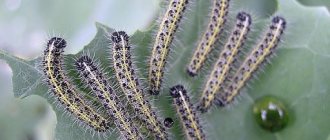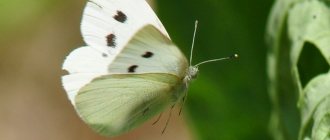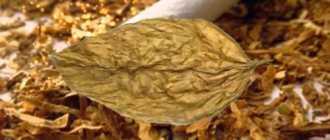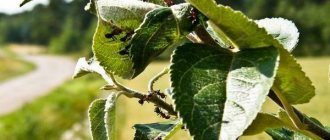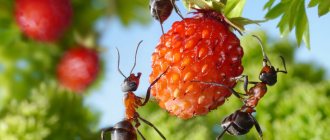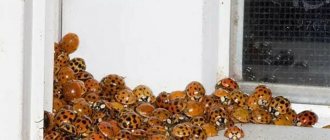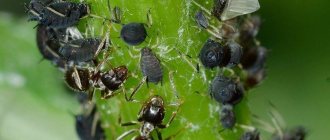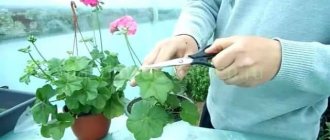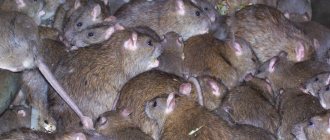The cabbage weed, also known as cabbage grass, is a dangerous pest of garden crops. He enjoys eating horseradish, rutabaga, turnips, turnips, radishes, but most of all cabbage. How to get rid of cabbage whites along with all its larvae and caterpillars?
As children, we could not even think that such a cute creature as the cabbage white is actually a dangerous pest of garden crops, mostly, of course, cabbage. And with the appearance of a dacha in the lives of each of us, we, who have matured, certainly choose the latter between admiring the white grass and preserving the cabbage.
The cabbage butterfly is distributed throughout Eastern Europe, as well as North Africa and parts of Asia.
Description of the cabbage butterfly
According to the classification, the pest belongs to the Eukaryotic domain, the Insect class, and the Arthropod phylum. The cabbage butterfly is part of the White butterfly family. It is most widespread in Eastern Europe and Africa. It got its name because of the great love for cabbage. However, this pest also causes damage to other crops.
It is possible to recognize an insect quite simply:
- Cabbage white has a dark body and 4 wings.
- It is mainly white in color. Females are easy to distinguish from males - females have black spots on their wings.
- The wingspan of female insects can reach 6 centimeters; in male insects this figure is smaller.
- The larvae have an ocher-colored body, and future insects stay close to each other.
- The butterfly's caterpillars are greenish in color and have white stripes along the entire body. In general, the size of the caterpillar reaches 2-3 centimeters.
Cabbage Butterfly
Cabbage butterflies are quite serious pests.
For reference! Outwardly, it can be confused with a reptile, but upon closer examination you can notice the differences. In addition, cabbage is larger in size.
Cabbage butterfly caterpillar
In females, the tips of the fore wings have characteristic black markings on the leading edge and black dots in the center. The presence of one club-shaped spot is noted on the anterior edge of the hind wings.
In males, the tips of the fore wings are also colored, but there are no spots; on the hind wings, on the contrary, there is one spot each.
In flight, the cabbage white moves unevenly; upon landing, it immediately folds its wings. Due to the yellowish color of the lower part, the insect is not noticed by birds. Most often the pest can be found in fields and meadows.
The body of the insect is oval, shaggy with three pairs of legs. The legs end in sharp claws, with the help of which the insect is held on the plants. However, the legs themselves are quite weak, it is quite difficult for the butterfly to move with their help, so for the most part it flies.
There are large faceted eyes on the head; the pest’s vision and sense of smell are very well developed, so it very quickly and easily finds bright and beautiful plants. Quite long antennae also help the cabbage plant to recognize flowers.
In an adult butterfly, the body is covered with dark hairs; three yellow stripes are clearly visible on the back and sides.
This is interesting! For some reason, inexperienced gardeners believe that the cabbage plant is a beetle that eats cabbage. In fact, this is a butterfly, and cultivated plantings infect its caterpillars.
Habitat
The cabbage butterfly lives throughout Eastern Europe, North Africa, East Asia and some regions of South America. It can be found on forest edges and clearings, in gardens and orchards where cruciferous vegetables grow - shepherd's purse, rapeseed, rapeseed, radish and various types of cabbage.
In search of food, butterflies make long flights over long distances. The ability to migrate, natural strength and adaptability to difficult conditions are characteristic of all representatives of the whitefish family. Some individuals of these insects living in the forests of Asia are distinguished by great endurance. The most beautiful and largest individuals of these tropical insects are born during the rainy season.
Feeding and reproduction of the pest
The cabbage weed spends the winter period in pupae. The butterfly pupates underground. In April - May, when the weather becomes warm and constant, insects begin to come out. The butterfly lays eggs on cabbage leaves or other cruciferous plants and weeds. An insect can lay an average of up to 300 larvae, but if conditions permit, the number of yellow cone-shaped eggs in a clutch can increase to 600.
Butterflies love some flowers
After some time, caterpillars appear; they are bright yellow in color, their body is up to 4 centimeters in length, and they have 16 legs. Gradually the color changes to green or blue-green, yellow and black dots appear.
Stages of life of a whitefish
The life of a butterfly is divided into 4 stages.
Egg
The female butterfly lays up to 200 eggs. She attaches them to the lower part of the plant leaf in small piles. The duration of development of the larvae in the egg is from 5 to 12 days.
Caterpillar
Its length reaches 35 mm. Number of legs: 16. Color: green-yellow camouflage. During development, caterpillars molt 4 times with an interval of 3 to 7 days. The duration of this stage is from 13 to 38 days.
Doll
Pupation is the last stage in the transformation of a caterpillar into a butterfly. The color of the pupa is yellow-green. The young butterfly emerges from the pupa after 2 weeks. When pupation occurs at the end of summer or autumn, the pupa freezes until spring, and only then does a new white appear.
Butterfly
Having emerged from the pupa, the butterfly dries its wings in the sun and is then ready to mate. The lifespan of an adult is about 20 days.
Danger of the cabbage butterfly for crops
During the warm period, the butterfly manages to live for two generations, even three in the southern regions. The pest can cause irreparable damage to the garden and garden plot. However, the butterfly itself is safe for rural crops. It is the caterpillars that damage the plants.
For food, insects use leaves of cabbage and other cruciferous crops - turnips, radishes, mustard, horseradish. Unfortunately, if no measures are taken in time, a colony of caterpillars can destroy almost the entire crop.
However, it is not only plants that can suffer. Cabbage white caterpillars secrete a toxic substance that can cause skin irritation. In some cases, poultry have died after eating these pests.
Hyphen
A hyphen is used in the following cases:
• if the application and the word being defined (i.e. the word to which the application refers) are common nouns: biologist scientist, teenage girls, French teacher, hero city, oil geologists, winter sorceress, villain melancholy, engineer-researcher, single canoe, pilot-cosmonaut, frost-voevoda, operator-programmer, deceased father (but: father is an archpriest), gentry gentlemen (but: lord hetman), bird-song, worker-innovator, aircraft- bomber, giant slalom, neighbor-musician, old watchman, excellent student (but: excellent students - heterogeneous applications), French teacher, organic chemist, battle painter;
• if the proper name comes before the word being defined (generic name): Moscow River, Ilmen Lake, Astrakhan City, Ivan Brother. When the word order is reversed, the hyphen is not added: the Moscow River, Lake Ilmen, the city of Astrakhan, brother Ivan. The stable expressions Mother Rus', Mother Earth, Mother Volga are written with a hyphen.
• Note: first names, last names, nicknames of people are not applications, unlike other proper names;
• after the person’s own name, if this name has merged with the word being defined into one whole: Ivan the Tsarevich, Ivanushka the Fool, Anika the Warrior, Dumas the Father, Rockefeller Sr. (some linguists believe that there are no applications in such examples).
A hyphen is NOT used in the following cases:
• if in a combination of two common nouns the appendix comes before the word being defined and can be replaced by a definition - a qualitative adjective: handsome man - handsome man (but: handsome man); old janitor - old janitor (but: old janitor); giant plant - giant plant (but: giant plant);
Prevention and control measures
The main prevention is timely control of the pest. If a clutch of eggs is detected on a plant, the necessary measures should be taken immediately. A small number of plants can be treated by removing pest eggs manually.
Preventive measures also include the following:
- Remove masonry from wooden buildings and fences using a strong water jet.
- Do not allow cruciferous weeds to grow strongly in the beds; remove them in a timely manner.
- It is better to place beds with cruciferous crops at a distance from each other so as not to attract pests.
- The dangerous insect does not like the smell of marigolds, valerian, and lemon balm.
- Cabbage seedlings should be covered with special agrofibre to prevent butterflies from laying eggs.
- Carrots, parsley and dill are attractive to the natural enemies of cabbage weeds, so it is better to plant cruciferous plants between them.
- Nearby cabbage beds are very attractive to pests, and not just cabbage butterflies.
- It is recommended to periodically inspect the leaves of crops in order to take the necessary measures in time.
- If necessary, use chemicals.
Caterpillars are very dangerous for the cruciferous family
In nature there are also natural enemies of cabbage weeds. The main rider is Apanteles. This is a type of wasp that is a parasite of caterpillars and lays its eggs in their body. As a result, 80% of the pest is killed. It is the rider that helps control the butterfly population in nature. In addition, cabbage grass can become food for beetles and spiders.
Other subtleties of keeping flying insects
Pets need their own home. They should not constantly fly around the apartment; you will have to arrange a house for them. Buy or make a special insectarium yourself. It will be easier to create a suitable microclimate in it.
- For a comfortable existence of animals, it is necessary that at home, in the room where they live, it is warm. The optimal temperature is 23-28 degrees.
- Humidity level is also important. Butterflies do not live long in dry air. Therefore, spray the room and insectarium with water. It is advisable that a few drops fall on each individual. The procedure must be done 1-2 times a day using a regular spray bottle.
- Your charges need somewhere to sleep. When free, they will most likely hang out on curtains and plants in the apartment. If you want them to sleep in your house, make a place for them there. To do this, place twigs in the insectarium so that you can sit on them and lower wet cotton wool to the bottom. It is better to put the house in a cool place in the evening, and in a warmer place in the morning.
Children are indescribably delighted when such beautiful and unusual animals appear in the house. Caring for them is not so difficult, you just need to follow some rules. Therefore, if your child wants to have a pet, this is a good option. We explained in this article what butterflies eat and how to breed them at home, so now you can easily deal with them.
Folk methods of fighting the cabbage butterfly
There are many ways to help fight this pest. First of all, it is recommended to try traditional methods. There are many recipes:
- Take equal amounts of burdock, yarrow and wormwood. Mix well and pour the mixture with boiling water in a ratio of 1/3. After two days, the infusion is filtered and the plants are treated with it.
- A bottle of valerian tincture is dissolved in 3 liters of water. Cabbage seedlings are treated with the solution; the smell is very unpleasant for the pest at any stage of development.
- Pine branches and cones in the amount of 200 g are brewed with 2 liters of hot water. Leave for a week to infuse. The finished solution is filtered and stored in the refrigerator. For processing, a glass of infusion is diluted in 10 liters of water.
- Soap and ash are wonderful substances that help cope with many harmful insects. They will also help against cabbage. Half a kilogram of ash is diluted in 10 liters of water, mixed thoroughly, and left for a while. Pour the clear liquid into a separate container, add 2 large spoons of liquid soap. The product is used to treat crops.
There are many folk remedies; it is recommended to strictly observe the proportions and weight during production so as not to harm the crop.
For reference! It should be remembered that traditional control methods are effective only against small quantities of pests.
Cabbage pupa
Chemicals
If folk remedies are powerless, then it is recommended to resort to chemicals. Of course, it is worth choosing safer options - biological control agents. They do not harm the plant and help cope with dangerous insects. It is worth paying attention to such products as Fitoverm, Lepitotsid.
However, in large areas it is better to give preference to serious chemistry - Karbofos, Actellik. The solution is prepared strictly according to the instructions, and the plants are treated only at the stage of leaf formation.
Knowing what harm cabbage grass causes, it is necessary to carry out preventive treatment of agricultural crops in a timely manner in order to grow a good and full harvest. To get rid of insects, you can use traditional methods; if necessary, use chemicals that are prepared strictly according to the instructions. Proper planting of plants of the same species will also help to avoid pests, as well as planting flowers that cabbage does not like.
How to feed an insect?
This question worries many beginners. After all, you can’t explain to a butterfly that it’s time for dinner, here’s her plate. Professionals give the following advice:
- Wait until the butterfly calms down and folds its wings. Take her by them (very carefully) and bring her to the food;
- A hungry animal quickly unfolds its proboscis and begins to eat. If it breaks out, it means it is not hungry;
- When you can’t feed an insect for a long time, help it. This happens sometimes when it is scared. Take a toothpick, try to carefully release the proboscis and dip it in the nectar;
- Or lower it with its paws onto a plate; in some specimens, the taste buds are located precisely on the legs.
There is no need to hold the pet while feeding, they put him in and let him go. If you want, eat, if not, wait a while.
And remember that after birth from the pupa they do not eat for about a day.
Don't worry about it.
